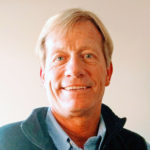Instead of fearing our future, Kingsport should work to shape it
I have often said that Kingsport needs a new strategy for the future. Unfortunately, after teaching strategy at West Point, I have come to understand that strategic thought is not intuitive to many people. Therefore, it is perhaps useful to start a series on the future of our community with a brief explanation of the m e t h o d o l o g y.
Strategy is the process of matching means (resources) to ends (objectives) in a competitive environment. To do this, you must clearly articulate your goals and recognize both the competition for scarce resources within the system as well as understand the nature of the “external threat” — competition from other entities. This scheme is as applicable to a community as it is to a business, nation or army. In essence, strategy is the “theory” about how to best create a desired future.
It entails thinking “conceptually” as opposed to “sequentially.” Sequential thought weighs the pros and cons of each step against its immediate surroundings, and even this we don’t do very well. Conceptual thought requires that each step be measured against the larger goal as well.
The process starts with a realistic picture of what our community should look like in the future. This is not the “pie-in-the-sky” imaginary notion that has hobbled our past attempts. Rather it is a logical approach that connects who and where we are with what we might become, our potential.
To do this, we must have a blunt analysis of the current environment. This is the picture of the situation today, and it lays out what we think may impact us along the way. These assumptions must be made explicit so that they can be tested over time. For example, locally we have had an implicit assumption that new retail will create additional jobs and produce greater tax revenue with a marginal impact on existing operations. Empirical evaluation of job and revenue growth might cast significant doubt on such beliefs.
The plan is a snapshot of established goals and the program to allocate resources according to a set of priorities at a given time. The key is to prioritize objectives in alignment with the ultimate goals. The budget and its projections for revenue and expenditures provide the backbone, but is subordinate to the plan.
If used correctly, the process of developing a strategic plan allows you to make trade-offs between competing objectives over time, given limited resources. One cannot, as the city has done, decide to undertake unprogrammed expenditures simply because someone came up with another “good” idea. Following the “shiny object” method of resource allocation likely will not lead to the desired future even if it does seem to make sense as a stand alone project today.
We have to accept that everything cannot be the “top priority” and our resources are not unlimited.
So where do we start? Perhaps it would be useful to go back to the beginning. Kingsport started as a “planned industrial community.” Industries were interwoven. Eastman used wood to manufacture ethanol. Wood pulp was used to produce paper, which was shipped across the street to make books. This attracted other manufacturing facilities and brought in jobs, which created a demand for goods and services. And so a thriving community was founded.
Where are we today? Our “planning” has gotten lost. And, our industry has declined, the linkages broken by the forces of globalization. Although Eastman and Domtar thrive as leaner operations, much of the other manufacturing base is gone. As a consequence, Kingsport has stagnated over the past 20 years.
Yes our business base, like most of America, has morphed into the service and retail sectors. However, we must realistically accept that our community has not grown. This is in no small part because we have let external forces shape our path, and although we have responded, it has largely been in a less than coherent fashion. Despite all of this, the fundamental strength of our character has helped this community remain a wonderful place to live.
Now is the time to redefine our future. We can regain our stature, but we must lay out that vision. This is the task before us, and my future columns will try to help delineate the parameters of that path forward. To paraphrase a well-known comment, we have nothing to fear but fear itself. I believe we are up to the challenge.
